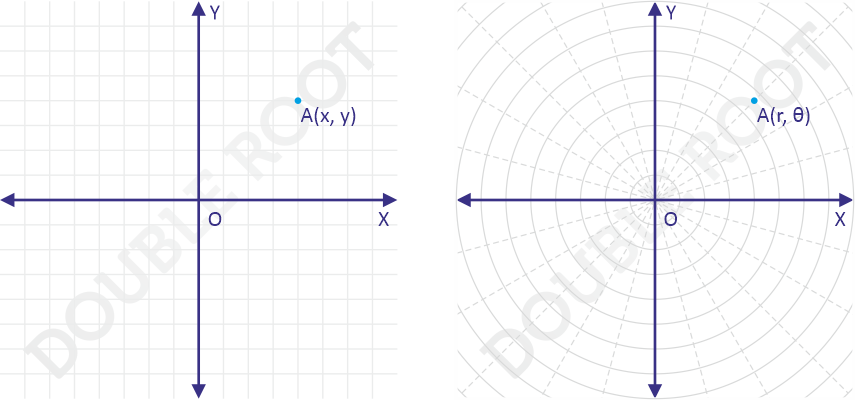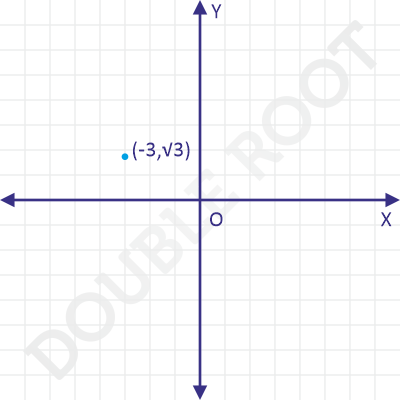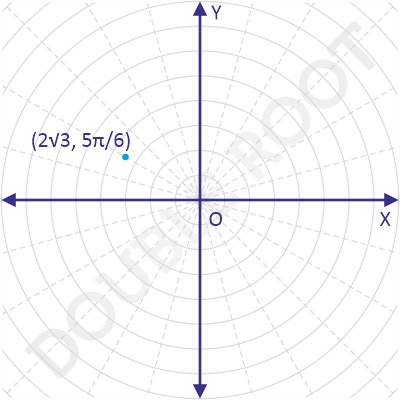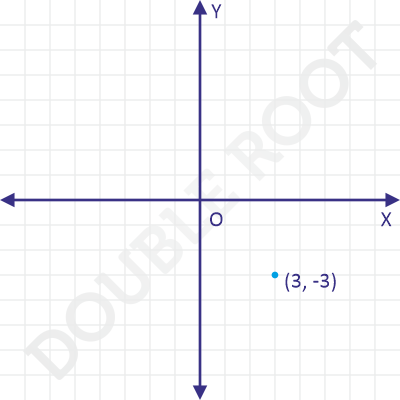Summary
This math recipe will help you convert Cartesian coordinates to polar coordinates and vice versa.

Skill Level
Easy
Time
Approx. 1 min
Ingredients
Coordinates of the point: \((r, θ)\) or \((x, y)\)
Method
To convert the coordinates from polar \((r, θ)\) to Cartesian \((x, y)\), we’ll use the following formula:
\(x = rcosθ\), \(y = rsinθ\)
To convert the coordinates from Cartesian \((x, y)\) to polar \((r, θ)\), we’ll use the following formula:
\(r =\sqrt{x^2+y^2}\)
\(cosθ = \frac{x}{r}\) and \(sinθ = \frac{y}{r}\)
The equations in \(θ\) are to be simultaneously solved to get a unique value of \(θ\).
Examples
Example 1 Write the Cartesian coordinates corresponding to \((4, \frac{π}{6})\).
Solution The figure shows the point \((4, \frac{π}{6})\) on the plane.

To convert its coordinates to Cartesian, we’ll use the first formula above.
\(x = 4\cos\frac{π}{6}\), \(y = 4\sin\frac{π}{6}\)
\(\Rightarrow x = 4 \times \frac{\sqrt{3}}{2}\), \(y = 4 \times \frac{1}{2}\)
\(\Rightarrow x = 2\sqrt{3}\), \(y = 2\)
Therefore, the Cartesian coordinates corresponding to \((4, \frac{π}{6})\) are \((2\sqrt{3}, 2)\).

Example 2 Write the polar coordinates corresponding to \((-3,\sqrt{3})\).
Solution The figure shows the point \((-3,\sqrt{3})\) on the plane.

To convert its coordinates to polar, we’ll use the second formula above formula.
\(r = \sqrt{(-3)^2+(\sqrt{3})^2} = 2\sqrt{3}\)
\(cosθ = \frac{–3}{2\sqrt{3}} = \frac{–\sqrt{3}}{2}\)
\(sinθ = \frac{\sqrt{3}}{2\sqrt{3}} = \frac{1}{2}\)
Solving the last two equations simultaneously for \(θ\), we’ll get \(θ = \frac{5π}{6}\).
Therefore, the polar coordinates corresponding to \((-3, \sqrt{3})\) are \((2\sqrt{3}, \frac{5π}{6})\).

Example 3 Write the polar coordinates corresponding to \((3, –3)\).
Solution The figure shows the point \((3, –3)\) on the plane.

To convert its coordinates to polar, we’ll use the second formula above.
\(r = \sqrt{(3)^2+(-3)^2} = 3\sqrt{2}\)
\(cosθ = \frac{3}{3\sqrt{2}} = \frac{1}{\sqrt{2}}\)
\(sinθ = \frac{-3}{3\sqrt{2}} = \frac{-1}{\sqrt{2}}\)
Solving the last two equations simultaneously for \(θ\), we’ll get \(θ = -\frac{π}{4}\).
Therefore, the polar coordinates corresponding to \((3, –3)\) are \((3\sqrt{2}, -\frac{π}{4})\).

That’s it for this recipe. Hope you found it helpful.
For more recipes, please visit www.doubleroot.in/recipes.
You can follow me on Instagram, Twitter, or Facebook to get all updates.